June 7, 2023
Native Plant Garden from Scratch in HOA: Kathleen Scott
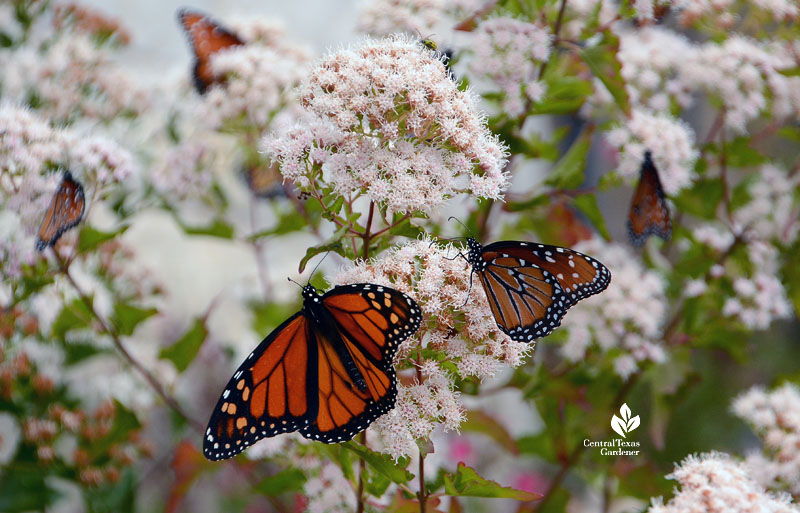
“If we want butterflies and bees and hummingbirds and birds, we have to give them a place to breathe and a place to eat and a place to shelter,” Kathleen Scott told us when we headed to her New Braunfels garden in November 2022.
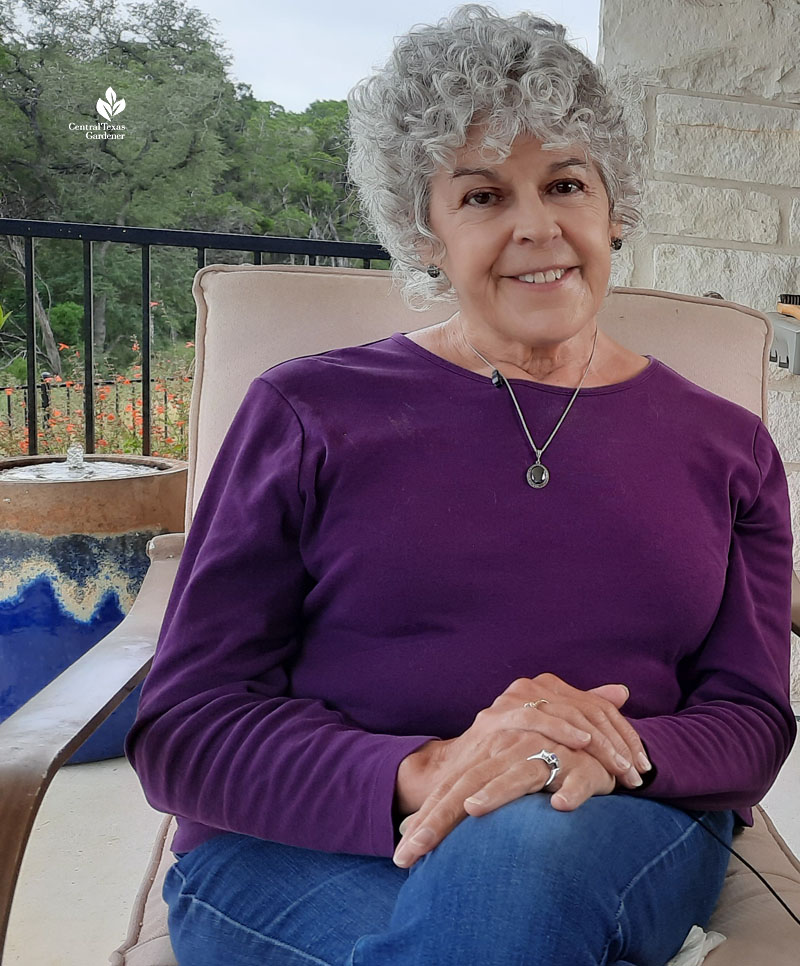
An experienced gardener, Kathleen’s a Comal County Master Gardener and serves on the board of the New Braunfels Native Plant Society. Still, she started anew when she and husband Denny closed on their just-built house in November 2020.
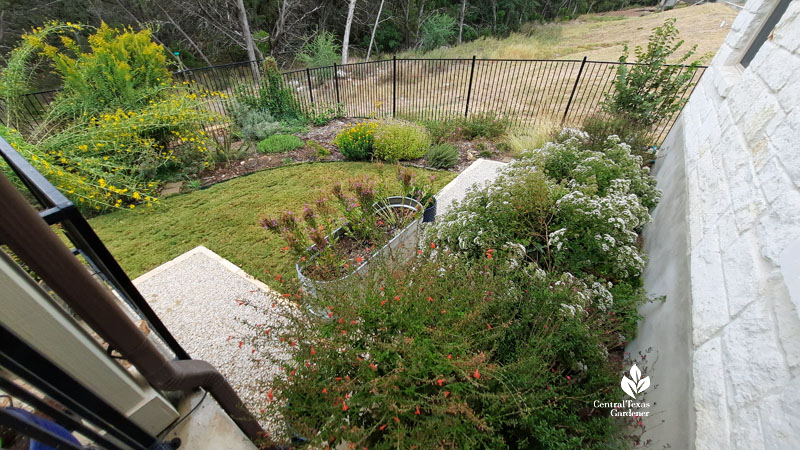
Their challenges: HOA lawn requirements of 75% front yard and 50% backyard. Deer live here, too, so Kathleen chose deer resistant plants in front. In front and the fenced back, they satisfied the HOA by ringing the yard in borders and curving beds.
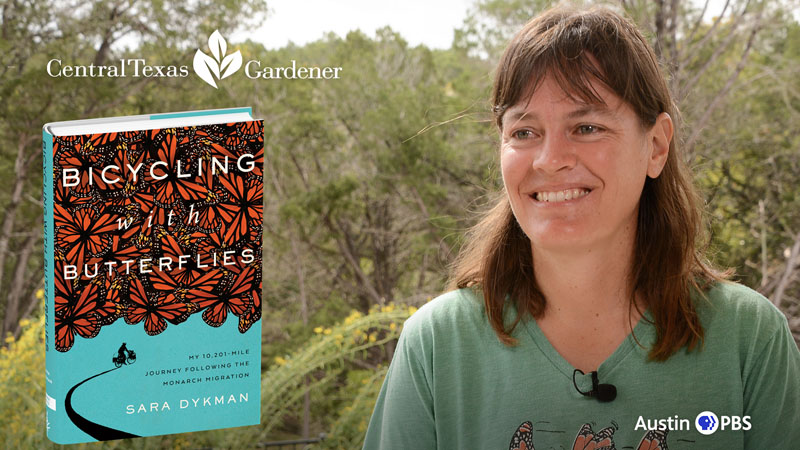
We’ve known each other for years via social media and emails, but didn’t meet in person until last fall when she hosted Sara Dykman, author of Bicycling with Butterflies: 10,201 Miles with Monarchs, and offered her garden as an interview location. Watch Sara’s powerful story!
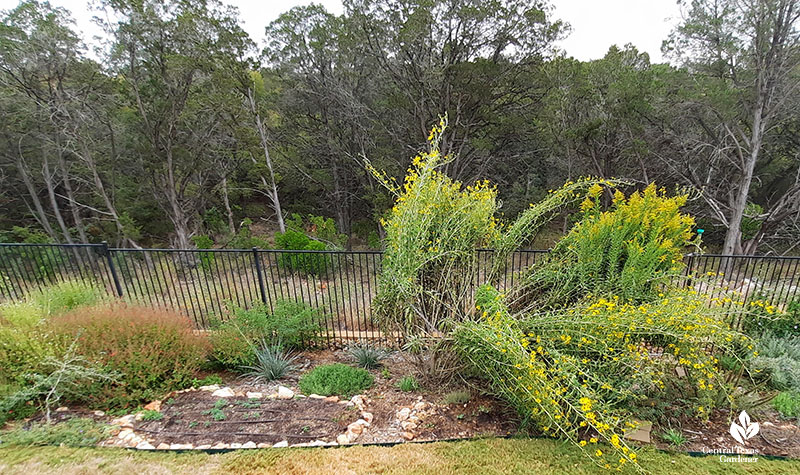
Her garden—only a year old—so beautifully illustrates planting for the future that we returned a week later. They started planting in October 2021, mainly from 4” pots and seeds, layering vines, shrubby trees, understory trees, perennials, red yuccas, bunch grasses, and ground covers. A few shade trees, too. Everything’s very young and establishing roots, but pint-sized possumhaw holly, kidneywood, goldenball leadtree, sennas and more promise a richly diverse habitat against the natural preserve beyond. Here’s Kathleen’s work in progress plant list!
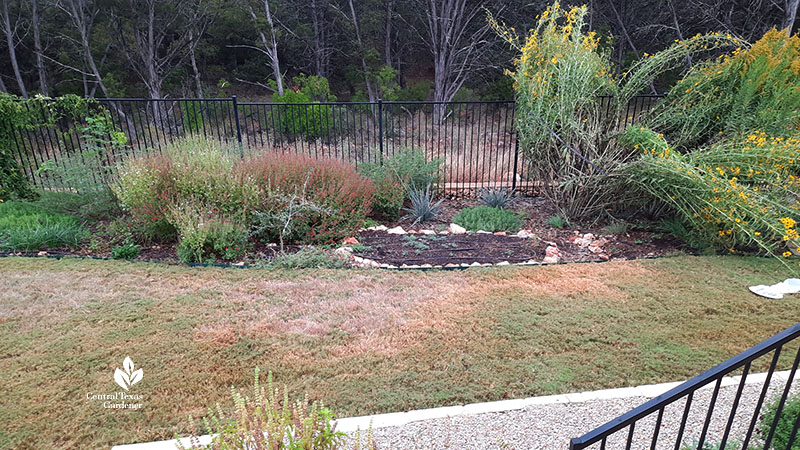
The Bermuda grass sod was so new that they ripped it out in sections. Then they sprayed nutrients, layered compost, cardboard and mulch. Finally, after six months, they started planting in October 2021.
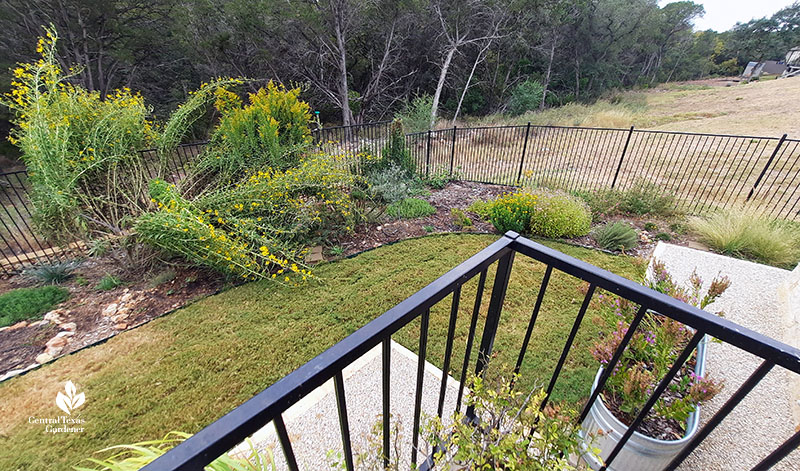
Right off the bat, the young plants headed into hard freezes, intense summer heat and drought just as their roots were getting established. But native plants can take the punches!
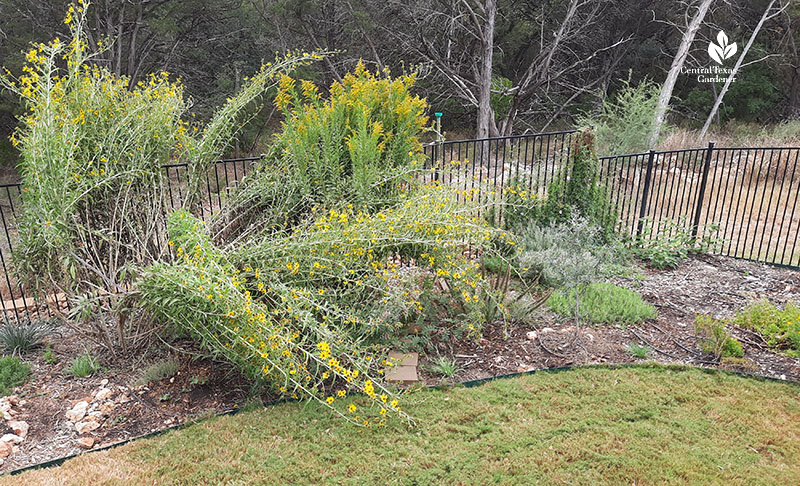
Still, Kathleen celebrated when she and Denny installed drip irrigation in May 2021. With a little extra moisture, Maximilian sunflower and goldenrod truly went over the top (as they can do in wet years), a golden autumnal feast for butterflies, bees, and goldfinches.
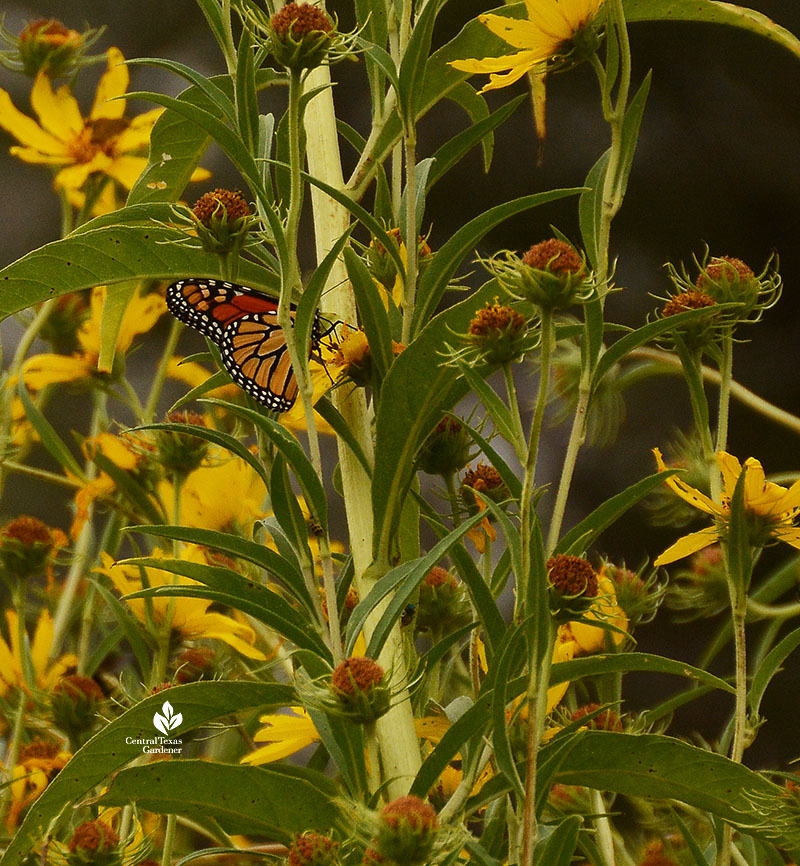
On our visits, clouds and even drizzle scattered what had been hundreds of butterflies—including migrating Monarchs—but a few hung around for us.
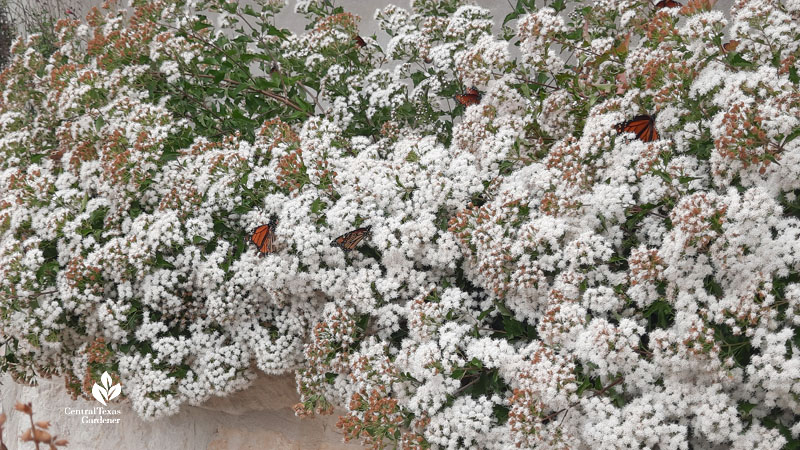
Another of their favorite plants: white mistflower, also called shrubby boneset (Ageratina havanensis).
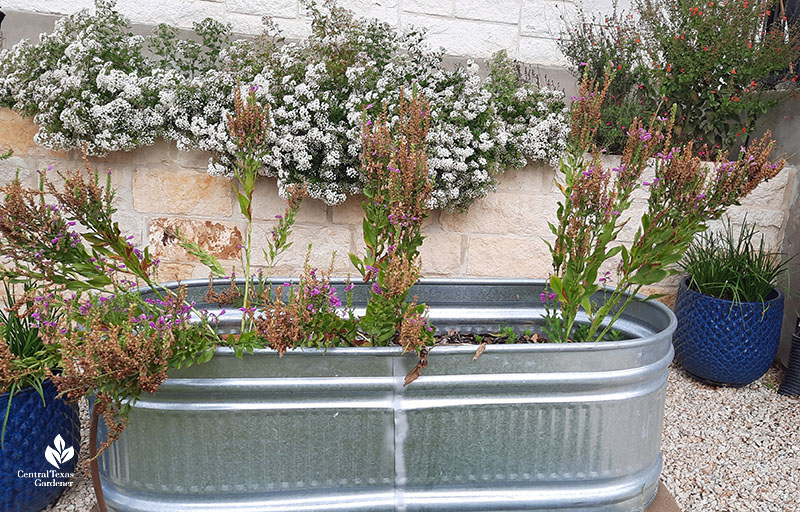
In the house-side stone raised bed, its fragrant flowers drew crowds of bees, butterflies, and other pollinators. Red tropical sage (Salvia coccinea) is also a hit with butterflies and hummingbirds. Fall obedient plant (Physostegia virginiana) well suits butterflies and hummingbirds, though by November, it was winding down. But this perennial is so aggressive that Kathleen confines its energy to stock tanks.
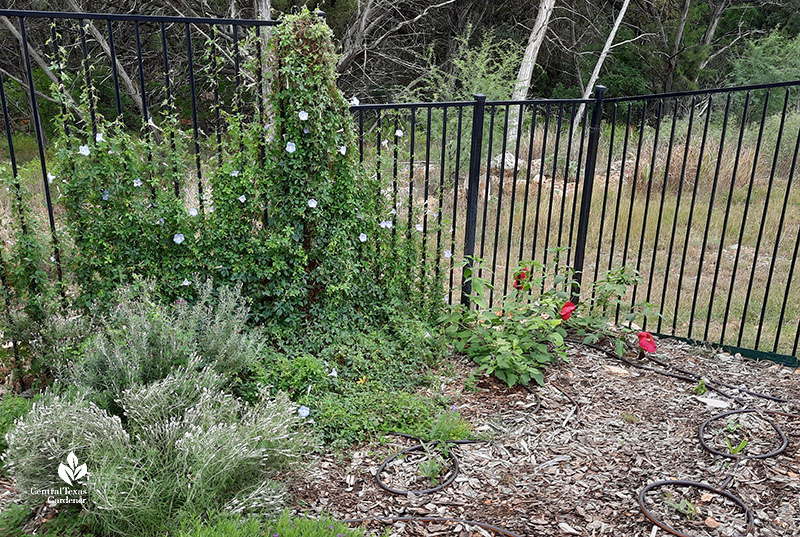
Kathleen planned for successive blooming and diverse plants to attract birds, hummingbirds, butterflies, bees and other pollinators. In this corner, Lindheimer’s morning glory bloomed while woolly ironweed was exchanging flowers for seed heads. Tiny green milkweeds (Asclepius viridis) promise Monarchs a host plant in the future.
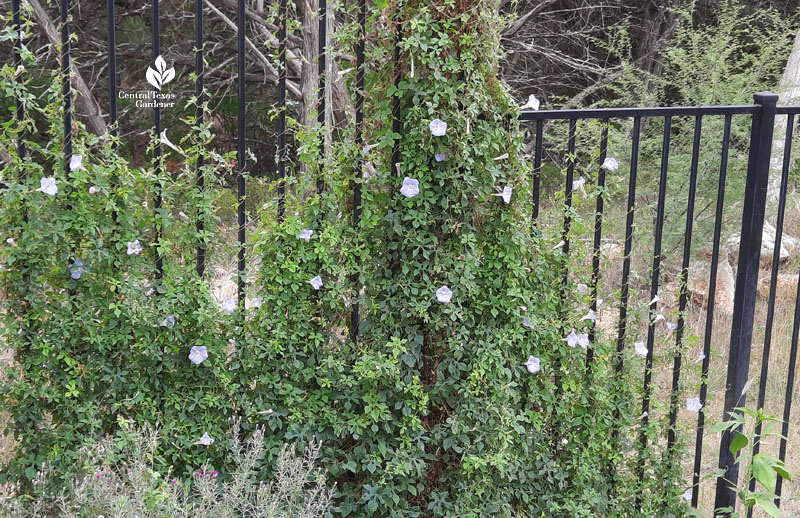
Closer shot of Lindheimer’s morning glory (Ipomoea lindheimeri).
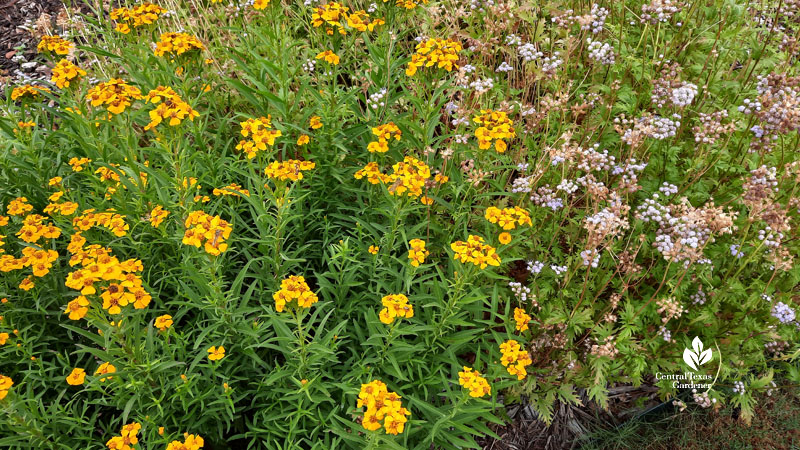
She uses tarragon-flavored Mexican mint marigold’s leaves in recipes, while pollinators head for its golden-yellow flowers. Gregg’s mistflower can flower in spring/summer (like it is now in our gardens), but especially shines in fall.
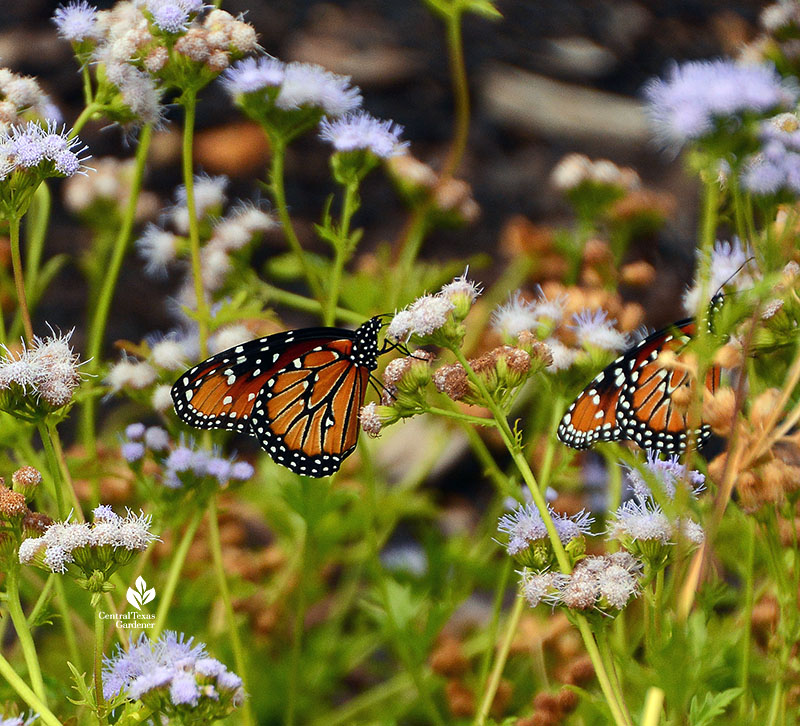
In good years, it’s positively blanketed with fluttering Queen butterflies.
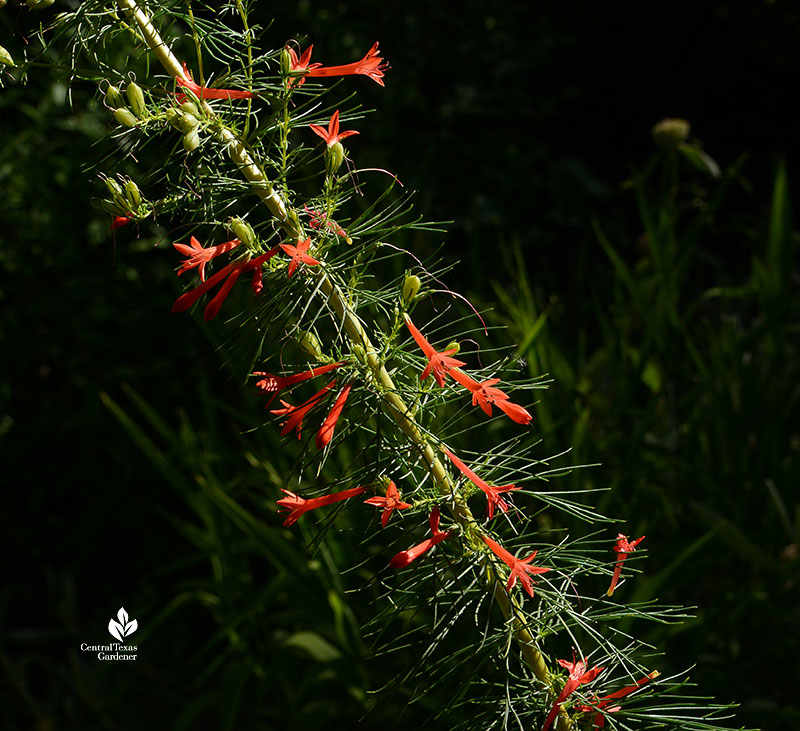
In late spring through summer, biennial (blooming every two years) standing cypress is sure to bring hummingbirds into your garden.
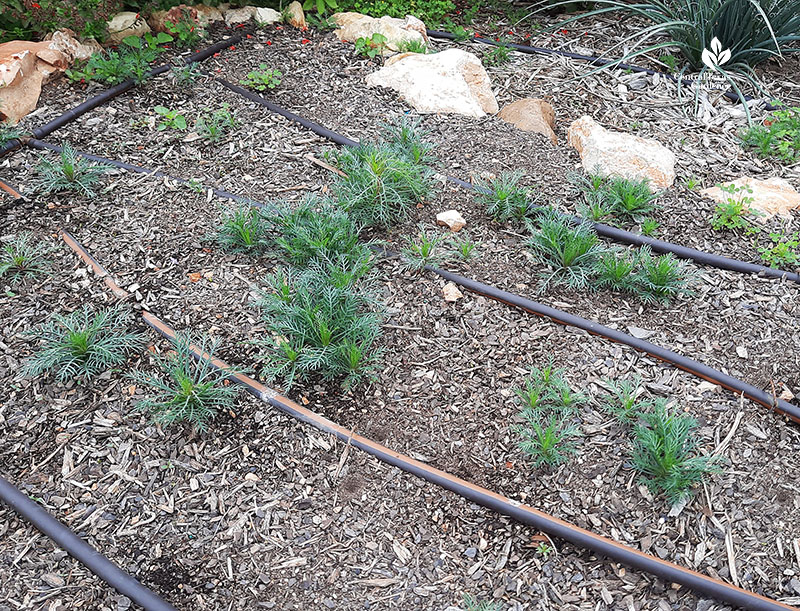
Last November, Kathleen’s were in rosette stage, but now that they’re in bloom, hummingbirds are rejoicing.
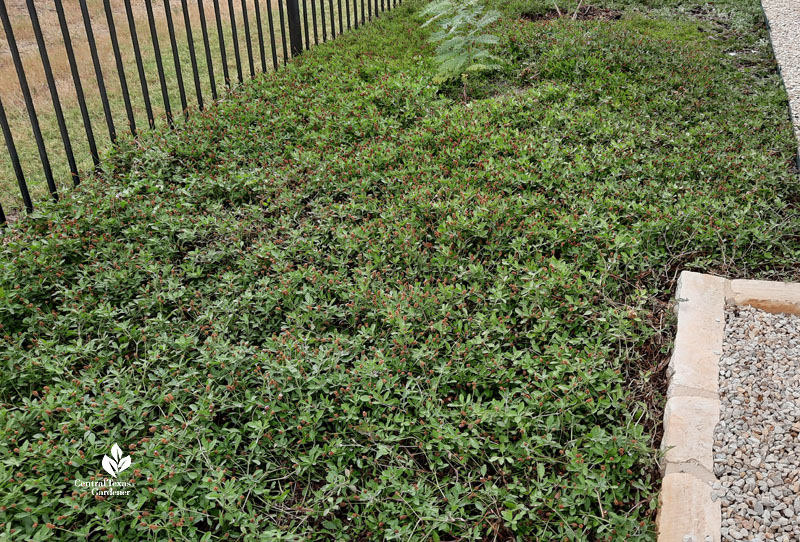
Layers are important, and the ground is one of them. In the side strip, evergreen Texas frogfruit blooms spring through summer as a butterfly host plant and nectar for tiny bees and other pollinators.
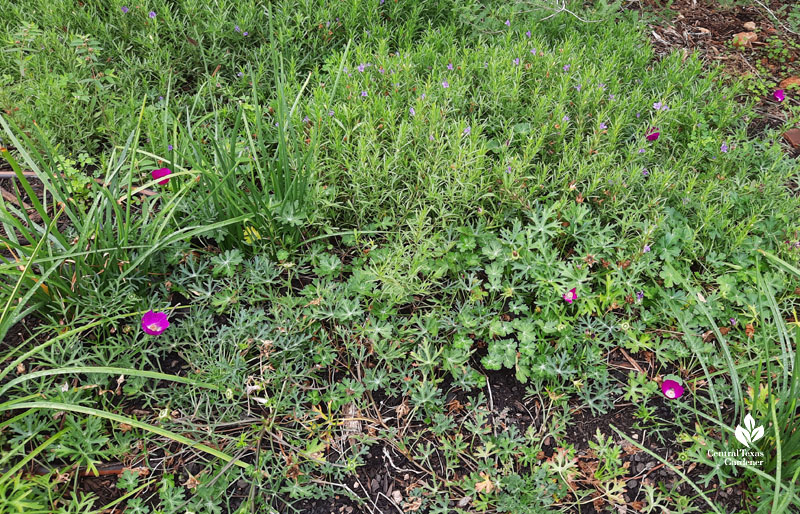
Snake herb can bloom from spring to fall, sporting tiny lavender flowers, but it was a surprise to see winecup in November.
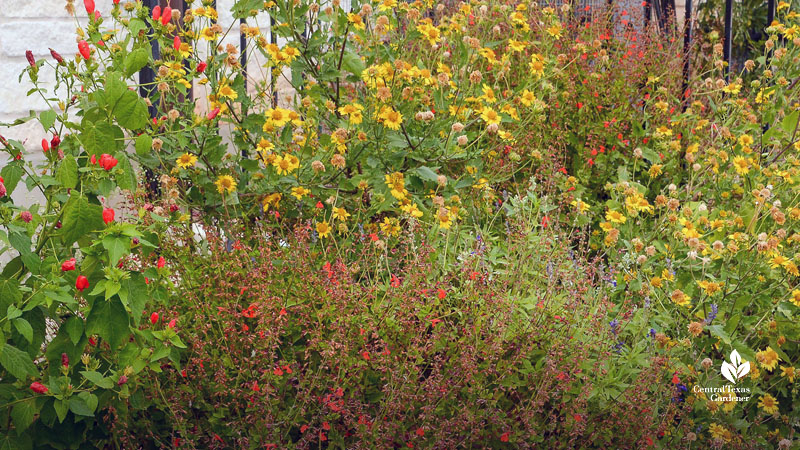
In the gate’s corner bed, hummingbirds and butterflies head to turk’s cap and tropical sage (Salvia coccinea). Just out of view, native coralbean promises hummingbirds in late spring to early summer. Yellow cowpen daisies entice butterflies to its nectar late spring to fall.
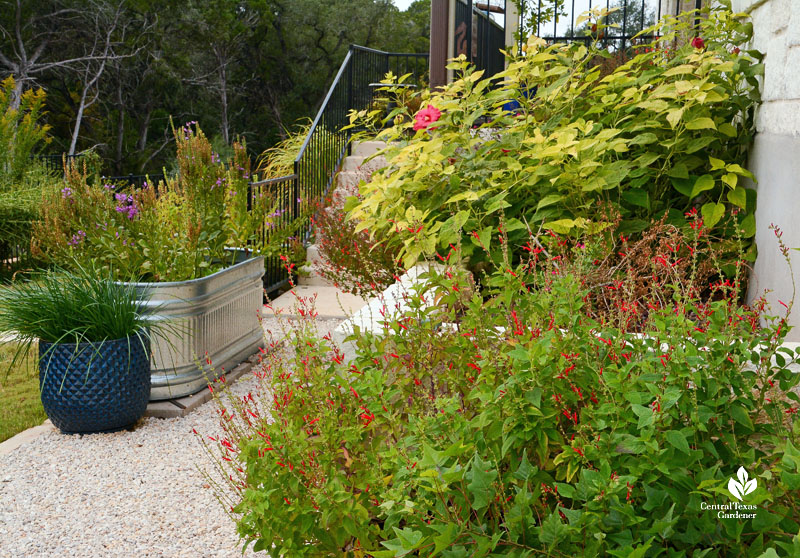
Tropical sages, both red and white, naturally populated Kathleen’s garden.
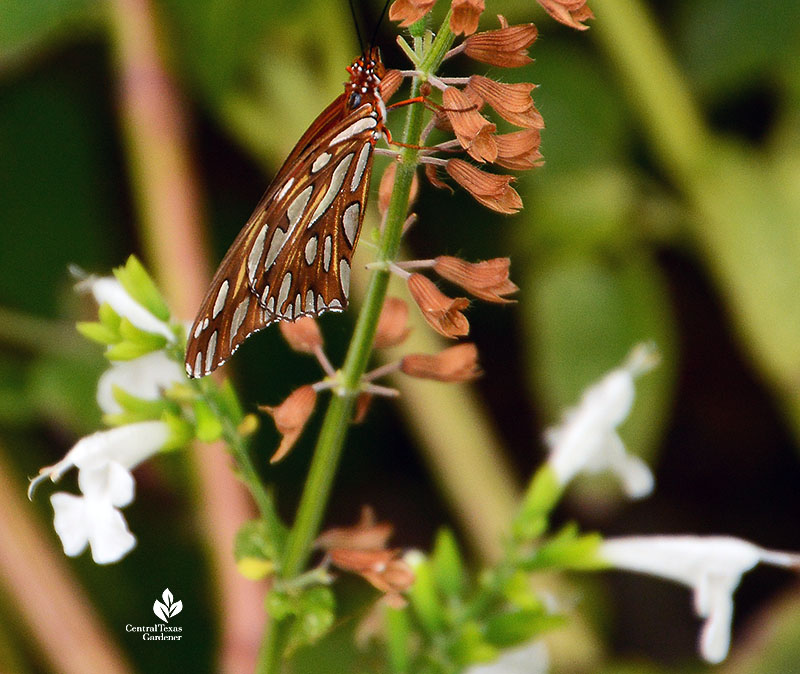
Hummingbirds and butterflies, like Gulf fritillary, dip into blossoms, while goldfinches eagerly pluck its seeds.
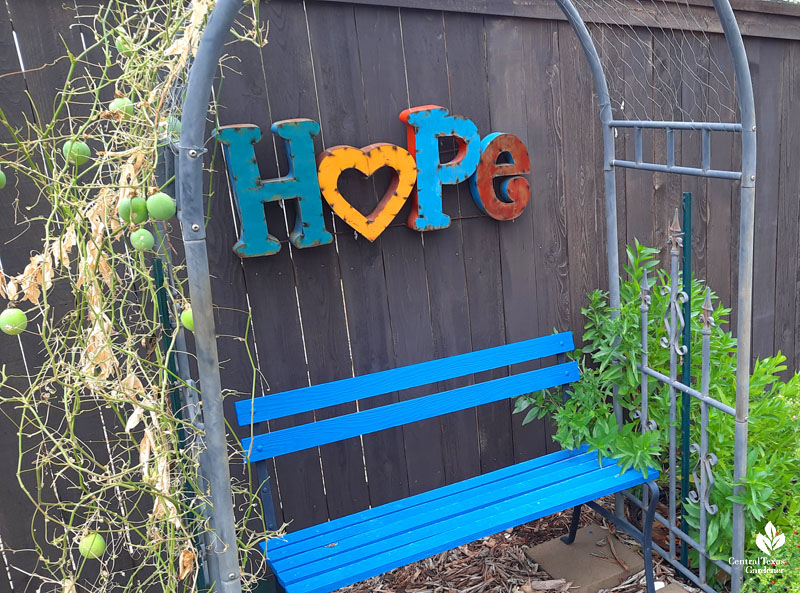
To foster multiple butterfly generations, Kathleen includes host plants specific to each species, like passion vine for Gulf fritillary. Hatching caterpillars chomped through hers, but the plant will be back, and perhaps the butterflies we saw started life on the arbor of hope.
Watch her story!
Thanks for stopping by! Linda
tags:

